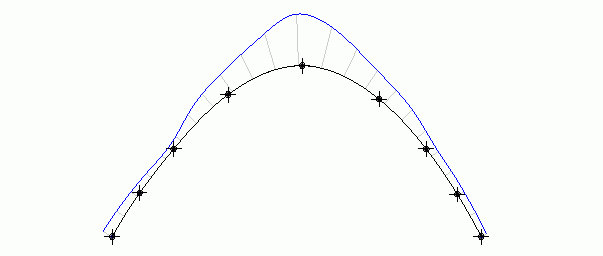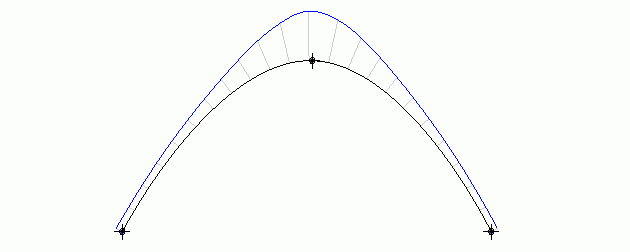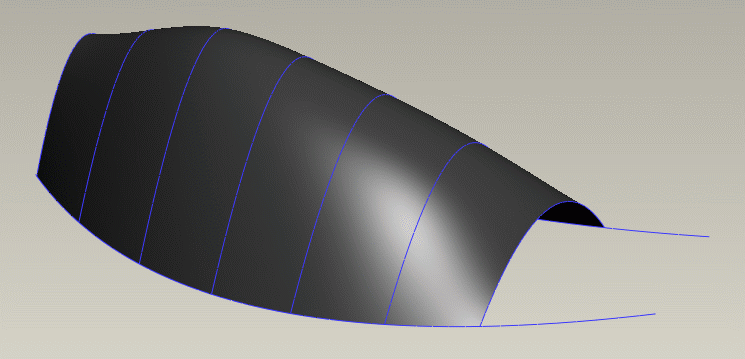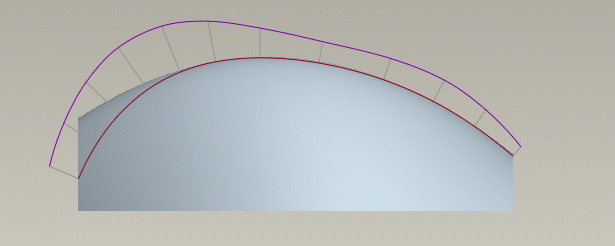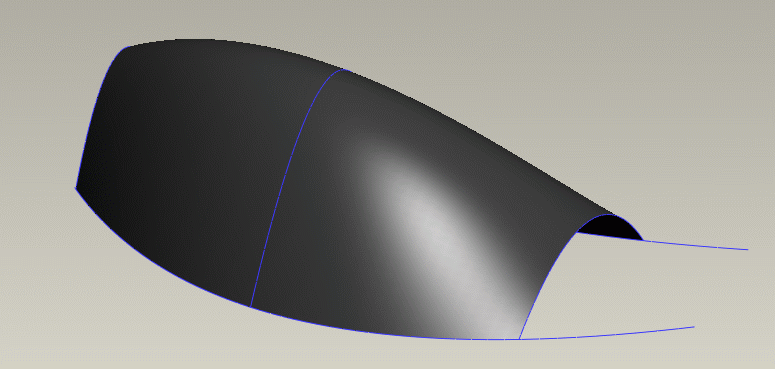Reference geometry
Variable Section Sweep
Layers & visibility
Adv. Rounds
Mathematical control
Advanced Patterns
Draft & Split plane Trim
Geometry from 2D graphics
Model analysis
Accuracy
Skeleton based surfacing:
Model Analysis
Section Curvature
Splines
Boundary Blend
Construction and manipulation
Trim, Merge & Solidify
3sided surfaces
Offset Surfaces
Curvature
Spline – basically, a smooth curve with a constantly changing radius - discussion HERE
Complex surface - surface with a constantly changing radius
If we consider the best approximate circle radius that passes through a point on a complex surface or spline curve, the reciprocal of the radius - 1/r - of this circle is the curvature of the surface or curve at that point.
If a surface is nearly planar - flat - then a point on it will have a very large approximate radius - 1/r will give a low curvature.
If a surface is has a very tight bend in it then a point on it will have a very small approximate radius - 1/r will give a high curvature.
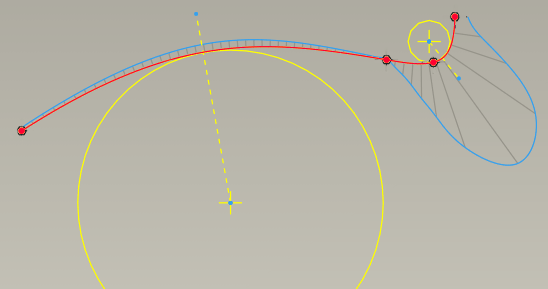
In the above image:
Red line is the surface cross section or a spline curve
The yellow circles are the approximate radius at those points
The blue line with grey spines is the Curvature Plot - the longer the spine, the higher the curvature, small radius - high curvature, large radius - small curvature.
Arcs or Splines?
Where possible, always use splines for complex surface sections. Multiple arcs will give multiple patches in the resultant quilt with only G1 endpoint/boundary relations.
Click image below for more info
Section Curvature - Splines and Surfaces
Always start with the minimum amount of control in a curve or surface. The system as to adhere to your specified control points/curve whether they are smooth or not. Better to allow the system to find the smoothest path between minimum control points/sections.

